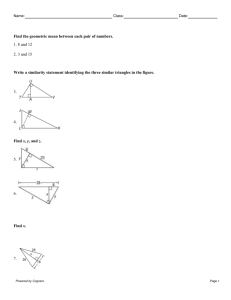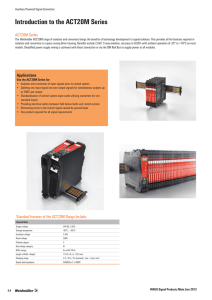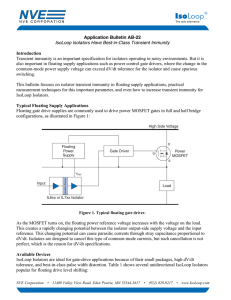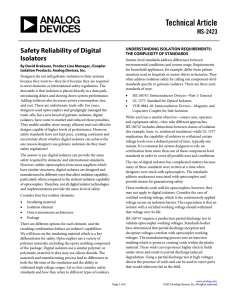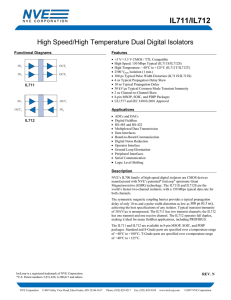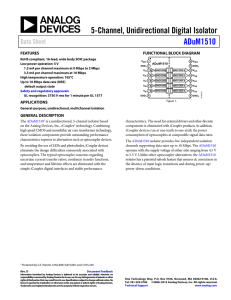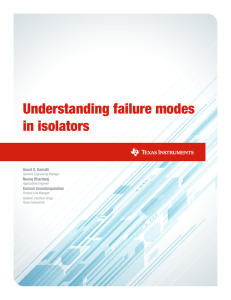App i By Mark Cantrell, Applications Engineer
advertisement
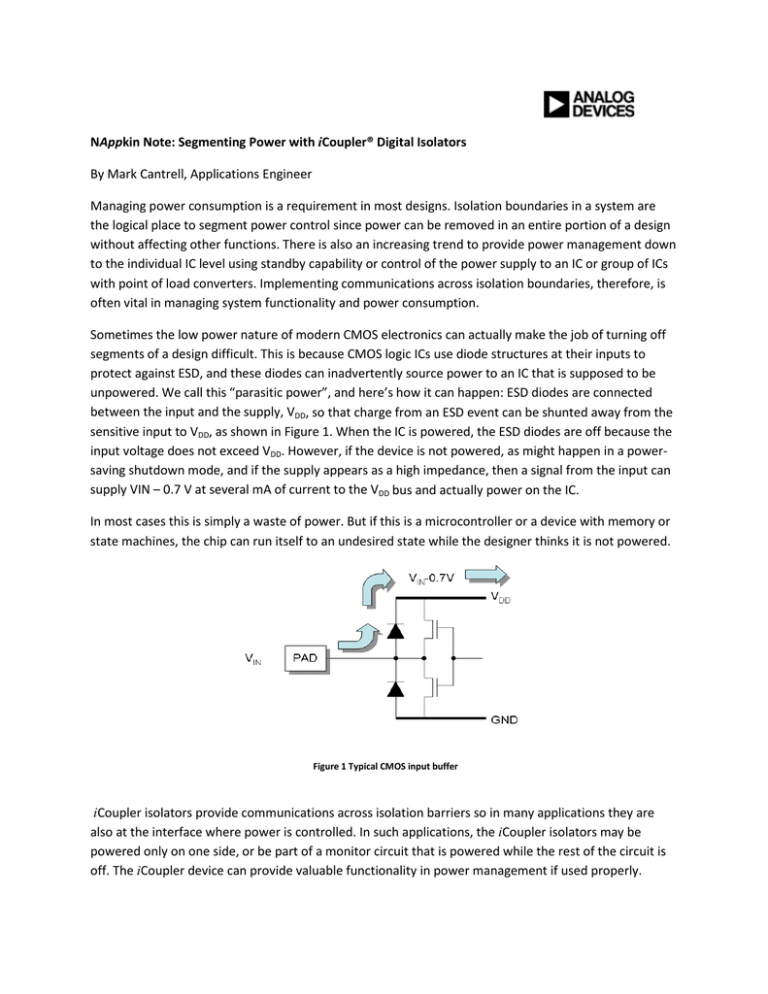
NAppkin Note: Segmenting Power with iCoupler® Digital Isolators By Mark Cantrell, Applications Engineer Managing power consumption is a requirement in most designs. Isolation boundaries in a system are the logical place to segment power control since power can be removed in an entire portion of a design without affecting other functions. There is also an increasing trend to provide power management down to the individual IC level using standby capability or control of the power supply to an IC or group of ICs with point of load converters. Implementing communications across isolation boundaries, therefore, is often vital in managing system functionality and power consumption. Sometimes the low power nature of modern CMOS electronics can actually make the job of turning off segments of a design difficult. This is because CMOS logic ICs use diode structures at their inputs to protect against ESD, and these diodes can inadvertently source power to an IC that is supposed to be unpowered. We call this “parasitic power”, and here’s how it can happen: ESD diodes are connected between the input and the supply, VDD, so that charge from an ESD event can be shunted away from the sensitive input to VDD, as shown in Figure 1. When the IC is powered, the ESD diodes are off because the input voltage does not exceed VDD. However, if the device is not powered, as might happen in a powersaving shutdown mode, and if the supply appears as a high impedance, then a signal from the input can supply VIN – 0.7 V at several mA of current to the VDD bus and actually power on the IC. In most cases this is simply a waste of power. But if this is a microcontroller or a device with memory or state machines, the chip can run itself to an undesired state while the designer thinks it is not powered. Figure 1 Typical CMOS input buffer iCoupler isolators provide communications across isolation barriers so in many applications they are also at the interface where power is controlled. In such applications, the iCoupler isolators may be powered only on one side, or be part of a monitor circuit that is powered while the rest of the circuit is off. The iCoupler device can provide valuable functionality in power management if used properly. Three behaviors of the iCoupler isolator come in to play. 1) If the iCoupler interface is functional while components that it is connected to are not powered, devices can be unexpectedly active. As shown in Figure 2, the VDD2 supply is active to allow communication with other active circuit elements. One of the data lines is connected to a device with an inactive VDD3 supply. This component can be parasitically powered by the data line via the mechanism shown in Figure 1. This can happen if that data line is high, or if the iCoupler isolator has a default HIGH output and VDD1 is also inactive. Figure 2 – Parasitic Power Two ways to avoid this issue are to use a default LOW output device, such as the ADuM141x, and drive the desired output low when VDD3 is off. This may require monitoring the power status of VDD3 and may take an additional isolation channel. Another alternative is shown in Figure 3 where an ADuM1251 part is used for the interface with circuits that may be off. The open collector output of the ADuM1251 uses a pull up to generate a logic high voltage. The pull up can be connected to the same supply as the target component. Since the only source of power on the line is the same supply as the target component, it cannot parasitically power the target component. Figure 3 – Taking Advantage of the ADuM1251 Open Collector Interface 2) The default output of the standard iCoupler device must be considered if there can be a condition where power is not present on both sides of the device. Referring to Figure 4, if VDD1 is off, any outputs on side 2 will take the default HIGH output of the ADuM1400 device. Since the side 2 circuit is a FET half bridge, a default HIGH output would drive both FETs on and potentially damage them. In this case damage can be avoided by choosing the ADuM1410 where the default state can be set to LOW. If the side 2 circuit was a transceiver then the ADuM1400 with the high default could be the proper choice. Figure 4 Shoot Through due to default state 3) As part of the iCoupler architecture, each side of the part must know when the corresponding data channels are active across the isolation barrier. This is required to allow the part to implement a default output state. It can be used as a cross-isolation “Power Present” signal as shown in Figure 5. When VDD2 is off, the ADuM141x iCoupler isolator places any outputs on Side 1 to LOW. When power is restored to VDD2, the input tied to HIGH (VDD2) will be transmitted and the output on Side 1 goes HIGH. Figure 5 – ADuM141x Implemented with Power Present Indicator Combining knowledge of how iCoupler isolators operate in different modes along with different default output devices or output types will allow power to be managed without unexpected results. For more information on iCoupler products with please visit www.analog.com/icoupler or send an email to iCoupler_Isolation@analog.com. ©2010 Analog Devices, Inc. All rights reserved. Trademarks and registered trademarks are the property of their respective owners. T09405-0-10/10




